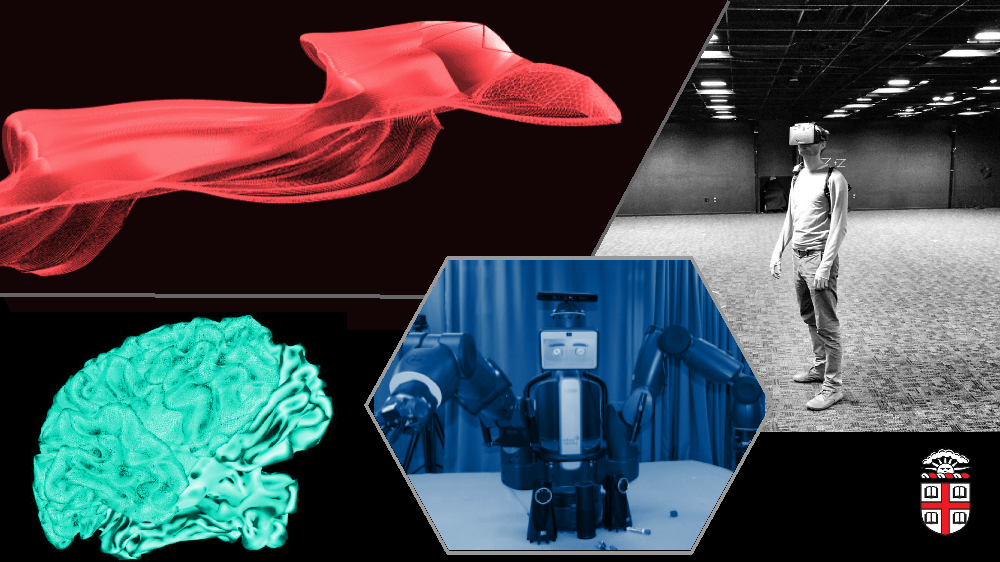Speakers shared ideas not just about electric vehicles but new ways of thinking about where we will travel—rethinking urban developments of single-story buildings on obsolete highways and creating new freeways in the sky. Along with speakers like Mate Rimac of Croatia--the innovator, entrepreneur, and founder of the electric car company Rimac-- Brown had two faculty members and two graduate students present their visions for the future of smart mobility.
As the only speakers from an academic institution, Brown researchers were introduced using the image shown here:

In the upper left corner, the red trace is from a bat in flight. Doctoral student Alberto Bortoni, shared how bats—some of the world’s best fliers—could transform how we think about flying robots—and one day—flying cars. Bertoni spoke for his lab team, fellow student Xiaozhou Fan and professors Kenny Breuer (Engineering) and Sharon Swartz (Evolutionary Biology).
The brain indicates Professor David Sheinberg’s neuroscience lab and the Carney Institute for Brain Science. Sheinberg described how he and his students, Diana Burk and Aarit Ahuja, are working to understand how machines—not known for their high emotional intelligence—could learn to read and react to human perceptions.
Eric Rosen, a doctoral student in Professor Stefanie Tellex’s computer science lab, described how robots—even cars—could be operated by the casual language we use with other humans to get the help we need every day.
In the final image, a person stands in virtual reality, connected to Professor Bill Warren’s Virtual Environmental Navigation (VEN) Lab, where his graduate students Brittany Baxter (PhD ‘20) and Meghan Willcoxon (PhD ‘21) are working on the Hyundai project. Warren presented how his lab models pedestrian behavior so that vehicles—from kickboards and cars to personal airplanes—can safely navigate crowds, possibly in three dimensions.
Brown’s collaboration with Hyundai, coordinated by the Office of Industry Engagement and Commercial Venturing, began with a student competition last fall, the Hyundai Visionary Challenge, in which student teams from these labs won cash awards totaling $45,000 and presented at the Mobility Innovator’s Forum last year. Brown’s presentations at the 2019 Forum closed the second phase of the collaboration between Brown and Hyundai, Idea Incubation, where each of these four labs received $50,000 for a six-month pilot project. The third phase is in design; with details to be announced in January.